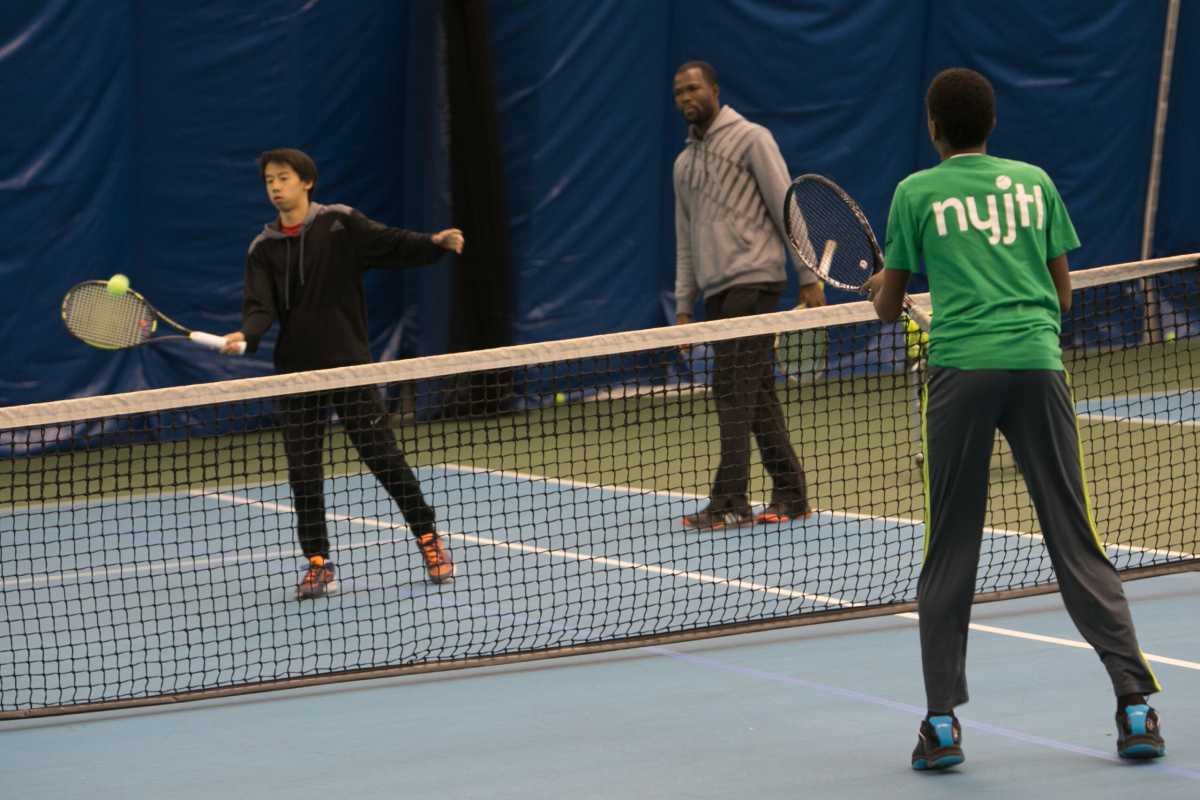With fewer daylight hours and colder temperatures, it’s only natural to want to stay inside to keep cozy and warm. Especially during winter breaks and days off for holidays, children may want to curl up in front of the TV or computer to watch movies or play video games.
But the change in season does not change kids’ needs for physical activity. The Centers for Disease Control and Prevention recommends that youth of all ages stay physically engaged throughout the day to encourage growth and development.
At the Long Island City-based nonprofit New York Junior Tennis & Learning (NYJTL), we see the many benefits of exercise every day, boosting not only young people’s physical well-being, but also their personal development and academic growth.
It can be tricky for parents to think of new and engaging ways to keep their kids active, but we’d like to share a few ideas to help them reach their fullest potential through fitness.
1. Go outside as much as possible during the day.
With less sunlight in winter, many people lose the natural vitamin D exposure they get in warmer months. Vitamin D is crucial for kids as it improves bone and heart health, helps fight infection, and lessens symptoms of depression.
Try to aim for at least 10 extra minutes of sun exposure daily; it goes a long way. Going on walks in your community or around the block will bring some warmth to those extra chilly days. On days when the wind chills aren’t as high, you can go on bike rides, play in the snow, play catch or tag in the park, or take a longer stroll through the neighborhood and even make it interactive with a game of “I spy” or a scavenger hunt.
These activities not only promote a healthy lifestyle, but also strengthen bonds and create lasting memories. Just make sure your kids have the necessary safety equipment, such as helmets for bike rides and sledding.
2. Explore at-home fitness activities
If it’s a rainy or snowy day, or it’s just been busy, and you want to stay in the comfort of your home — no need to fret. There are plenty of ways to keep your child moving without leaving the house or breaking the bank.
Workouts might seem time-consuming or intimidating at first, but they don’t have to be. You can get a lot done in a short amount of time, and there are plenty of online resources at your disposal.
There are lots of kid-friendly videos on the internet that can guide you and your child through a workout.
Many routines require no equipment and are low impact. For those who want to explore using weights in their workouts but don’t have weights at home, you can improvise with objects you already have, such as water bottles or bags of rice. On days when you’d prefer to keep it simple and fun, make a playlist with your child’s favorite songs and have a living room dance party. Consistency is key!
3. Find an indoor sport or activity your child loves
In addition to staying active, getting your children involved in an extracurricular activity can help them become more well rounded, develop their interests, and improve their social skills by teaching them principles of sportsmanship and teamwork.
Activities such as team and individual sports, performing arts, or martial arts have been proven to help with kids’ self esteem and physical fitness. In New York City, there are a multitude of leagues, clubs, venues, or studios that offer these activities in professional environments and various price ranges.
At NYJTL, we’re all about tennis, and proud to offer our free Winter Weekend Indoor Program in Queens, Brooklyn, Manhattan and the Bronx, available until early March. Part of our Community Tennis Program, the program allows children and teens ages 5 to 18 to play tennis on Saturdays and/or Sundays from 6-8 a.m. In addition to instruction, there are free tournaments for participants during mid-winter recess and the three-weekend-long Hartman Cup tournament.
4. Set realistic goals
Winter can be a challenging time to maintain a consistent fitness routine, but setting realistic goals can help keep children motivated. Whether it’s improving their tennis serve, increasing endurance, or mastering a new technique, having tangible goals creates a sense of purpose and accomplishment.
Break down bigger goals into smaller, achievable steps to make progress more manageable.
For example, you might set a goal for accomplishing 15-minute workouts in the beginning of your fitness journey, instead of intense hour-long sessions right off the bat.
In New York City, the colder months take up a big chunk of the year, and it’s critical that kids remain active — especially during these developmental years. The entire family can benefit from achievable goals and a holistic approach to fitness. We hope that this year, parents will embrace the winter season as an opportunity for their children to grow, learn, and stay active.
*Author Sam Gornes is the strength and conditioning coach at New York Junior Tennis & Learning, the largest nonprofit youth tennis and education program in the nation. NYJTL provides programming throughout all five boroughs, and its headquarters are located at 36-36 33rd St., Suite 504 in Long Island City.





































